In this article, we'll introduce you to the specific tools designed to be used when replacing brake components and servicing your brake system. Having the right tools BEFORE you start working on your vehicle makes these types of jobs quick, easy, and doable for the home mechanic. It also prevents having to put things back together before the job is finished because a tool needs to be purchased.
Owning the right brake service tools and doing the job yourself will save you hundreds of dollars by sparing you a visit to the repair shop – and much more over the course of a lifetime of brake work. If a quick brush-up on brake terminology would be helpful, check out our related article Glossary of Brake Terminology.
Because the actual process of replacing brake components may require vehicle-specific tools in some instances, we recommend checking with your manufacturer or consulting a repair guide for any how-to questions. And always practice shop safety: wear protective clothing and eye wear, have a first-aid kit and fire extinguisher nearby, provide good lighting for yourself, and never work on a car or truck that is not securely supported.
Getting The Wheels Of The Vehicle Off The Ground
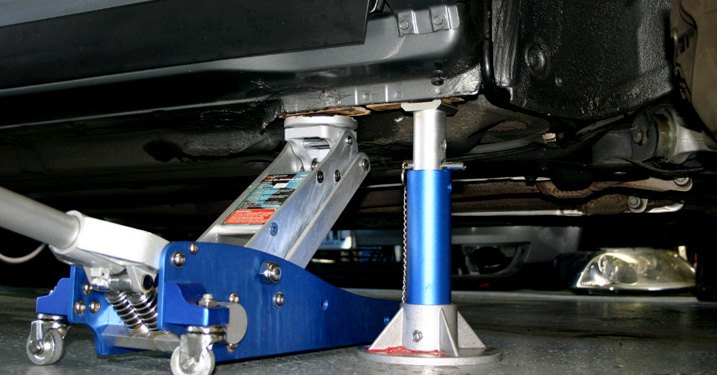
After loosening (but not removing) wheel lug nuts or lug bolts, the first few steps in the process involve getting the front or rear of your vehicle off the ground and secured in place. Because it's essential to replace left- and right-side pads and rotors in pairs for the front or rear, you'll want to have at least two jack stands so that the entire front or rear of the car can remain elevated safely as long as necessary.
A good vehicle jack makes the lifting process easy, and there are even combination jack stands with built-in hydraulic jacking ability if you prefer. Wheel chocks for whatever wheels are staying on the ground will play a vital role in preventing the vehicle from rolling as you wriggle components loose. A wheeled creeper provides maximum comfort to slide around on when reaching for tools, and strong grease remover will make removal of old, caked-on gunk easy.
Removal Of Calipers From Mounting Brackets
A good set of wrench sockets and open-ended wrenches is essential for breaking the bolts loose that secure your caliper to its mounting bracket. Once the caliper is unbolted, using a wire hanger or plastic zip ties to hang the caliper and support its weight properly will prevent stress and damage to the flexible brake hoses. Some calipers may require a hex-head (also known as "Allen head") socket or Torx head socket to remove the bolts.
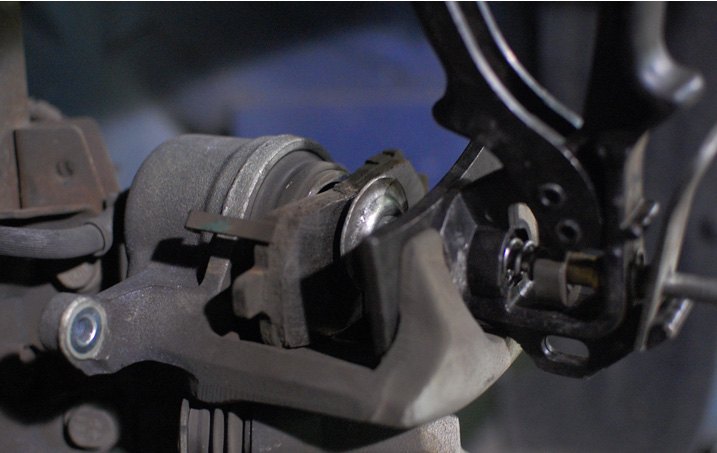
After pulling the old brake pads out of the caliper, a caliper piston reset tool will make it easy to compress pistons back into their housings to provide clearance for new brake pads. Depending on vehicle application, some caliper pistons may need to be rotated (or "rewound") back into the caliper housing – a specially designed universal adapter piece will make that process easy. Should you own more than one vehicle, you can consider a kit which offers adapters in multiple sizes.

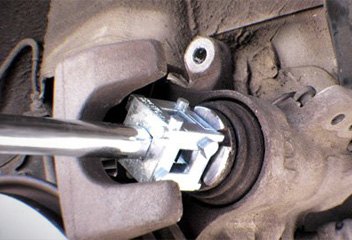
Disc Brake Pads And Rotors
Once caliper pistons have been compressed, you're ready to put your new brake pads into place. Before doing so, clean the pins that the caliper slides on, then apply fresh brake parts lubricant. To quell brake pad vibrations and resultant noise, coat the back side of the brake pads with the caliper lubricant as well. Be sure to NOT get any of this lubricant on the friction surfaces of the pads or rotors!

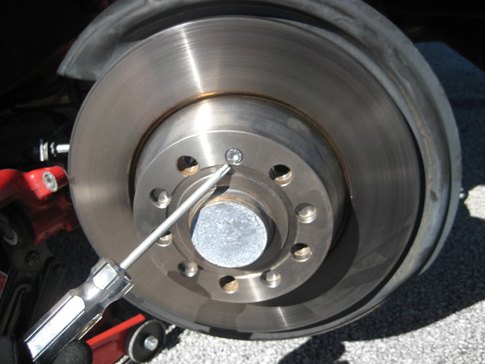
If you'll be replacing brake rotors, removal of a small bolt or bolts that secure the rotor to the wheel hub is sometimes required. As with removal of calipers, an Allen Head (or hex) socket or Torx head socket may be necessary on some vehicles.
Brake Fluid Bleeding
If you've opened up the brake's hydraulic system to replace a disc brake caliper or master cylinder, or simply want to follow your manufacturer's brake fluid maintenance recommendation, you'll need to flush out the old fluid and replace it with new fluid by bleeding the entire system. If you'll be bleeding brakes with the help of someone else to step on the pedal, a simple brake bleeding kit with some rubber elbow fittings, a bleeder tube, and a bottle for the old fluid being discharged will make the process mess-free.


If you'll be bleeding the brakes by yourself, you have a number of options, including a clever one-way hose which allows brake fluid out but stops air from re-entering. Either way, a specially shaped brake bleeder wrench makes it easy to open and close bleeder valves on each caliper. Some examples we offer are the OEM Tools One Person Brake Bleeder Kit, CTA One Man Brake Bleeder Kit, and the Powerbuilt One-Man Brake Bleeder Master Kit just to name a few. If you really want to work like a pro, consider investing in the Symtech Brake Flush Assistant – a power-operated machine that creates a constant level of desired pressure in the brake system, allowing a single user to flush and bleed an entire brake system in less than 15 minutes.
Drum Brakes
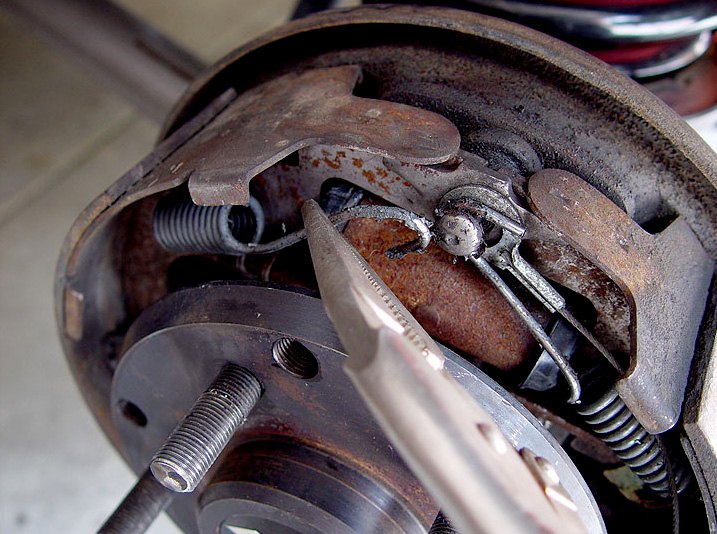
When you find it's time to replace your drum brake shoes, brake drums, or parking brake components, CARiD has the parts AND tools you'll need to perform the job yourself. Once the drum is removed, a T-handle brake shoe spring removal tool for American vehicles with big springs will make easy work of getting the shoes off. One hook grabs the spring as another arm of the tool wedges it off. Some import cars with smaller hold-down clips on the brake shoes may benefit from a compact, circular-ended brake clip tool.

When you're ready to adjust the clearance between the brake shoes and drum, a starwheel adjuster spoon will allow you to rotate the starwheel adjuster on the drum brake assembly through a hole in the backing plate. We also offer universal drum brake repair kits that include the spoon along with a selection of retaining spring tools and return spring tools. If you are rebuilding your drum brake wheel cylinders (a must if new replacements are not available), a brake hone tool makes the process easy when attached to a drill.
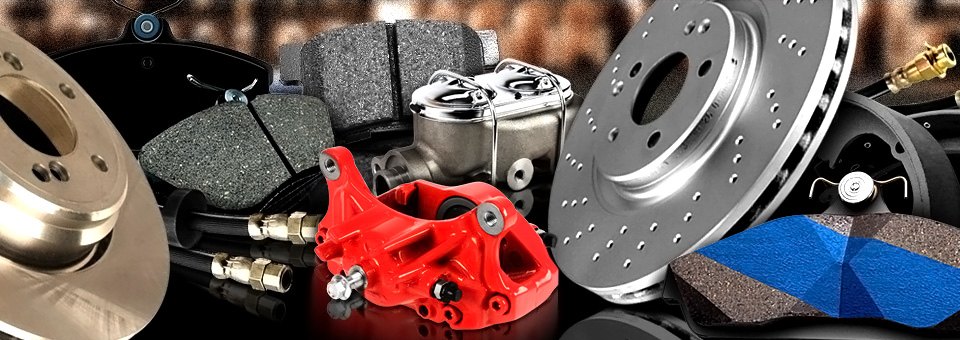
Should you wish to purchase replacement brake components such as calipers, pads, clips, rotors, drums, shoes, brake lines, and more, CARiD has all the high-quality OEM-style replacement parts you need in our Replacement Brake Parts section.
If you desire upgraded components geared toward higher performance, be sure to check out our Performance Brake Parts category. You’ll also find our related articles on performance brake pads, rotors, and “big brake kits” helpful when selecting the components that are just right for your needs.
As we mentioned, owning the right brake service tools and doing the job yourself will save you hundreds of dollars by sparing you a visit to the repair shop – and much more over the course of a lifetime of brake work.
